I have a lot of topics I want to cover, but “how to lose weight” seems to be one of the most popular issues people talk to me about. I thought I’d jump right in and go over some tips for safe & effective strategies.
Keep in mind, there are different stages of weight loss that people are going through. Maybe you’re just starting your journey. Maybe you only have a few extra pounds hanging on for dear life. Maybe you’ve hit the infamous “plateau”…. the arch nemesis of dieters since the beginning of time. This particular blog is going to address how to lose weight if you’re just starting out and have more than 20 pounds to lose.
I think the most daunting question that haunts new beginnings of any journey, is “where do I start?” Unfortunately, there isn’t a one-answer-fits-all response. EVERYONE has a different, personal, starting place. My suggestion to steer you in the right direction is something called a food diary. This is a really popular, and incredibly effective tool that nutrition professionals use to gather data to make their suggestions. It’s exactly what it sounds like! You keep a diary and write down the food you ate, and how much of it you ate, throughout the day. Everything! You can’t get a good idea of where extra calories are coming from if you cheat on this project. There are so many times we get super busy and it feels like we haven’t eaten anything…. but those tiny snacks and drinks we grab on the go are often PACKED with more calories than we think, and many times, more than we need. Try and do this for a minimum of 3 days. If you can do it longer, you should! You want to be able to see patterns. It’s hard to pick apart problem areas when we’re used to our own routines. But when you see everything condensed for the day, you start to get a better understanding of what your diet really looks like. It makes it easier to find that starting point when you’re making a plan and learning how to lose weight.
Now… if the very idea of carrying around a notebook to write things down all day cripples your soul and tramples all over your newfound motivation… you’re not alone! Guess what? There are apps that will do this for you! The most popular is MyFitnessPal. I use this STILL, DAILY… and I love it! There’s even an option for mobile apps to scan bar codes and it will automatically upload the nutrition information for that food!! How easy, right? Two others I know of are: Sparkpeople, and FatSecret.
So now that you have days of food information staring at you, what do you do with it? How do you know what the problem areas even are? How does any of it help you learn how to lose weight? I’m going to give you 4 different areas to try and rein in all that data you’ve been collecting.
1. PORTION CONTROL
You want to know what a portion size is, & you want to know how to figure that out from the nutrition label. We live in a world where getting more for less is necessary for budgeting! But when you have more available, it doesn’t mean you should always put more on your plate. There are specific measurements for portion sizes for each of the different food groups. If you’re just starting out, that may be a good second step that I’ll get into on another blog. For now, lets just talk about that very top portion of the nutrition label & how it tells you how much you’re eating.

This is a label from a box of whole wheat elbow pasta. It says a serving size of this food is only a 1/2 cup of pasta. The calories in that serving are 210 calories.

What about this one? This label is from a jar of peanut butter. You might have heard some pretty great things about peanut butter! It contains protein, it has fiber… and it also has the heart healthy fats everyone talks about! What a perfect food, right??! Well, yeah… it does have all that great nutrition! It’s also a very high calorie food. Look at the serving size. That label is telling us that in 2 tablespoons of peanut butter there are 180 calories. Just think how fast that adds up if you’re not paying attention!
Let’s check out one more.
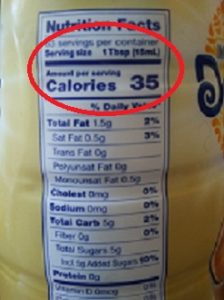 I find that iced coffee and flavored creamers are everywhere! This nutrition label tells us there are 35 calories in one serving of flavored creamer. Not too bad, right? What else does it tell you though? One serving = 1 tablespoon! It’s pretty unlikely that anyone is using just 1 tbsp. So add that up…. do you use 3? 4? more? Do you have multiple cups of coffee everyday? I often hear people tell me they don’t understand why they can’t lose weight when they mostly just drink coffee all day. When I hear that… it really sounds like they’re eating nothing! But if you do the math… it’s a lot easier to drink your calories away and not realize it because you never feel full at the end.
I find that iced coffee and flavored creamers are everywhere! This nutrition label tells us there are 35 calories in one serving of flavored creamer. Not too bad, right? What else does it tell you though? One serving = 1 tablespoon! It’s pretty unlikely that anyone is using just 1 tbsp. So add that up…. do you use 3? 4? more? Do you have multiple cups of coffee everyday? I often hear people tell me they don’t understand why they can’t lose weight when they mostly just drink coffee all day. When I hear that… it really sounds like they’re eating nothing! But if you do the math… it’s a lot easier to drink your calories away and not realize it because you never feel full at the end.
The point I want you to take away from this is not that you should only be using 1 tbsp of creamer because that’s what a portion is, or only eating 1/2 cup of pasta because that’s one serving. You can have the coffee the way you like it, or a plate of pasta… but just be aware that you are having multiple servings in that one meal or drink. That’s important when you look back at your food diary. If you have “bowl of pasta & cup of coffee” listed on there for lunch, you have to know what that means. Did you have a bowl of pasta that was 420 calories, or a bowl that was 840 calories? Did your coffee have 105 calories or 210 calories?
You don’t have to drive yourself crazy doing math all day either (that’s my job!) Your job is to be aware of what you’re eating so you know where you might be able to make some changes and cut back.
So you can see how critical portion sizes are when you’re learning how to lose weight! Spend some time getting familiar with the nutrition labels on your favorite foods. Learn what their portion sizes are, and then actually measure that out when you’re doing your food diary.
2. AVOID ADDED SUGAR
Now we’re going to chat about sugar. I’m not talking about natural sugar, like what you might find in whole fruit. Please don’t avoid whole fruit! 🙂 I’m talking about sugar that’s added into your food that isn’t normally part of that food. The trouble with added sugar is that you’re not getting nutritional benefits from it, but you ARE getting extra calories. Added sugar does make food taste sweet. So if you have a sweet tooth, this may seem like a wonderful ingredient! However, if you’re trying to learn how to lose weight, this could be the reason you’re having trouble. Added sugars are absorbed quickly in your body & will make you feel hungry a lot sooner!
Here’s a list of some common foods with added sugars that you may want to cut back on, or avoid altogether:
- candy
- cakes/pies (that means cupcakes too!!)
- muffins
- jams & jellies
- soda!!! *** This is a biggie for a lot of people!
- flavored coffee/tea drinks
- ice cream
- sports drinks/energy drinks
- fruit juice *** (WHAT?!)
It’s true that fruit juice CAN be considered a serving of fruit. It’s also true that it may contain only 100% fruit juice with no added sugars. And didn’t I JUST tell you not to avoid fruit? I did! But fruit JUICE is a little bit different. It’s a very concentrated beverage that has a LOT of sugar, even if it’s a natural sugar. It also lacks the fiber you find in real fruit. If you don’t eat fruit, it’s a good way to include some vitamins & minerals. But it will not help you stay full & it’s packing about 120 calories in a single 8oz serving.
And that leads me to my next strategy:
3. DRINK MORE WATER
Drinking your calories is a great way to lose track of how much you’re actually eating & may give you trouble when trying to lose weight. There are a few big culprits here that I will pick on: soda, flavored coffee/tea drinks, & juice.
And I think we’ve already covered all those drinks in my tip to avoid added sugars. So check your food diary. If your day is sprinkled with these types of drinks, that could be a great starting point for you!
Or maybe you look at your diary and notice that you don’t have much listed for drinks at all! That’s another huge issue. We have to stay hydrated! Sometimes the signals in our body get scrambled. We have signals bouncing all around that tell us when we’re hungry, when we’re full, and when we’re thirsty. Sometimes, when we’re thirsty, our body is craving something and we mistake that signal for being hungry. And what do we do when we think we’re hungry? We eat! Have you ever said to yourself, “I don’t know why I’m hungry, I just ate a little while ago….”? Thirst may be the answer to that question! Next time you feel that way, try drinking a glass of water and waiting for little while.
4. MAKING A MEAL FROM AT LEAST 3 DIFFERENT FOOD GROUPS
Why is that even important? Each of the food groups offers nutrients that reacts a little differently in your body. When you’re eating a variety of different foods, our body is getting the nutrients it needs and doesn’t tell us to keep eating and looking for what it’s missing.
A good rule of thumb is to use 3 different food groups when eating a meal. If it’s just a snack you’re after, 2 food groups should keep you satisfied until mealtime.
Below, I’m going to list the food groups & a few examples to get you thinking about what you may like to eat in that group:
FRUITS: apples, bananas, oranges, grapes, peaches
VEGETABLES: green beans, broccoli, cauliflower, squash, carrots, beans & peas
GRAINS: rice, oats, breads, pasta, wheat, grits. It’s recommended to make 1/2 of the grains you eat come from whole grain sources. Examples of that would be whole wheat bread, brown rice, or oatmeal.
PROTEIN FOODS: meat, poultry, fish, beans & peas, nuts & seeds, eggs
DAIRY: milk, yogurt, cheese
One more you may hear about are “oils.” It’s not a food group, but oils do have some important nutrients that we need. Oils are fats that are high in calories, so you want to limit the amount you eat every day. Some examples are olive oil, canola oil, corn oil. Some common foods that contain oils are fish, avocados, olives, & nuts.
You should refer to your food diary and count how many food groups you see in your meals and snacks.
So there you have it! These are my top strategies for how to lose weight.
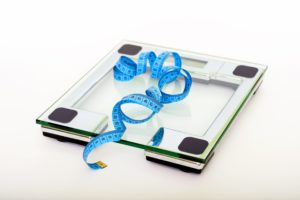 Are there other strategies? SURE! But I think some of them are a little more detailed & may be frustrating if you’re just starting to look at your diet plan with the intention of making changes.
Are there other strategies? SURE! But I think some of them are a little more detailed & may be frustrating if you’re just starting to look at your diet plan with the intention of making changes.
One thing I’ll point out though that may get overlooked in your efforts: Make a realistic goal, and only start with one or two goals!
A lot of diets fail because people throw themselves into changes that they don’t really like and aren’t realistically going to keep doing. It takes a long time to build a habit, and not only is your body adjusting, but you’re mentally adjusting to these changes too. If you look at your diary and notice you’re drinking soda all day, making unbalanced meals, & eating too many servings of a particular food, do not try to change all of that in one day! That is not how to lose weight. That is a great way to get frustrated, feel like you’re missing out on things you love, & abandon your efforts. My advice is to pick ONE! Pick ONE thing & make a plan for how you want to change it. Keep doing that one thing until it doesn’t feel difficult anymore and then move on to the next thing. It gets easier! You got this!
 I’ve seen a lot of silly memes floating around about expecting weight gain during this time…. and we all need to joke around and have fun. Laughing is especially important now while we’re all a little more stressed out than usual!
I’ve seen a lot of silly memes floating around about expecting weight gain during this time…. and we all need to joke around and have fun. Laughing is especially important now while we’re all a little more stressed out than usual! may not have you jumping for joy, but they’re FREE and most of us have some. Think about it… people pay hundreds of dollars for a stair master and we have the free version of it just hanging out waiting to be walked on! Even a few trips up and down can kick some butt. I did a stair-challenge indoor workout at my last apartment. Try climbing your stairs 10 times and see if you don’t break a sweat! It’s not the most fun ever, but it’s effective. If you live with other people, you can make it more fun by making your own challenge or a game out of it. The first person out has to wash the dishes!
may not have you jumping for joy, but they’re FREE and most of us have some. Think about it… people pay hundreds of dollars for a stair master and we have the free version of it just hanging out waiting to be walked on! Even a few trips up and down can kick some butt. I did a stair-challenge indoor workout at my last apartment. Try climbing your stairs 10 times and see if you don’t break a sweat! It’s not the most fun ever, but it’s effective. If you live with other people, you can make it more fun by making your own challenge or a game out of it. The first person out has to wash the dishes! done. But also seriously… dance. Make a list of your favorite songs that you can really move to, and then get to it. You can make this a solo activity or get the whole family going! Depending on skill, you can certainly ban any recording devices from the party if need be….
done. But also seriously… dance. Make a list of your favorite songs that you can really move to, and then get to it. You can make this a solo activity or get the whole family going! Depending on skill, you can certainly ban any recording devices from the party if need be…. remember it being when I was a kid. It’s fun, and you can do a lot of different types of jumps with it. This is one activity that gets the blood moving quickly for sure.
remember it being when I was a kid. It’s fun, and you can do a lot of different types of jumps with it. This is one activity that gets the blood moving quickly for sure. that you can do all kinds of different dance moves and tricks with a hula hoop. It’s an amazing workout, and one that doesn’t require a whole lot of space (unless you want and have the space to move more of course.) I tend to enjoy the tricks that require the hoop to move off my body a lot, and I may or may not have broken a couple knick knacks…. BUT… there are plenty of different muscle groups you can target while keeping the hoop in motion and on your body. Plus… it’s just really fun! I highly recommend it!
that you can do all kinds of different dance moves and tricks with a hula hoop. It’s an amazing workout, and one that doesn’t require a whole lot of space (unless you want and have the space to move more of course.) I tend to enjoy the tricks that require the hoop to move off my body a lot, and I may or may not have broken a couple knick knacks…. BUT… there are plenty of different muscle groups you can target while keeping the hoop in motion and on your body. Plus… it’s just really fun! I highly recommend it!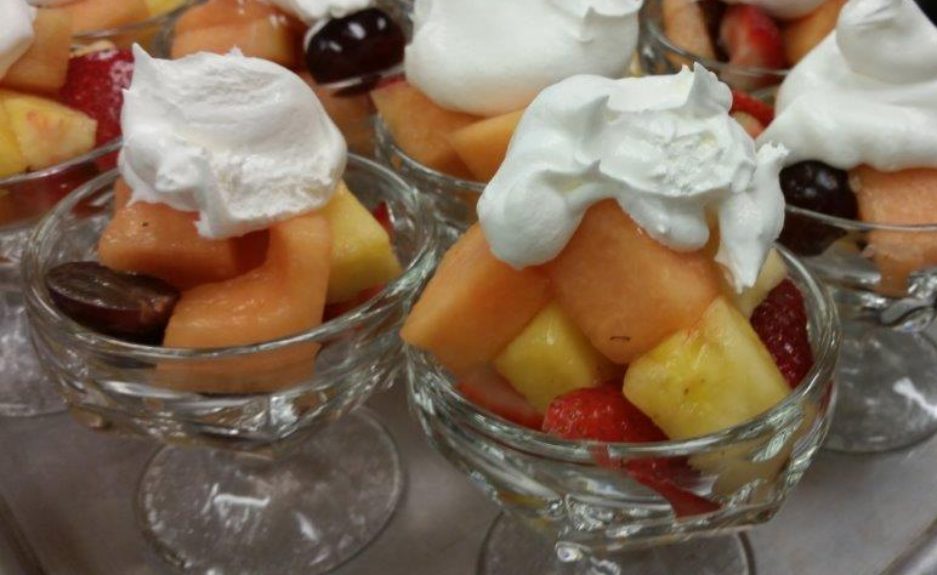
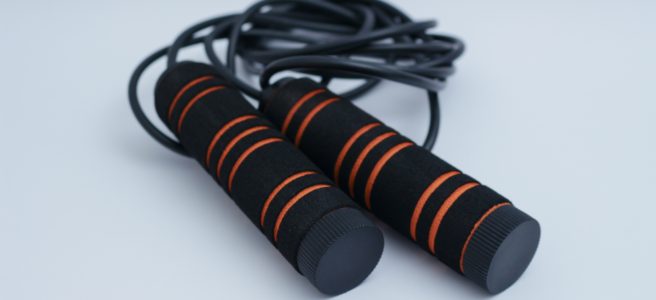

 talking about solid foods… because they are DELICIOUS!
talking about solid foods… because they are DELICIOUS! about what happens when you get too hot. You sweat. This is the body’s way of helping bring your temperature back down so you don’t overheat. You are losing water when that happens, and you need water to make it happen and to replace what you lose.
about what happens when you get too hot. You sweat. This is the body’s way of helping bring your temperature back down so you don’t overheat. You are losing water when that happens, and you need water to make it happen and to replace what you lose. Staying well hydrated can also help us achieve and maintain a healthy weight. I had mentioned in a
Staying well hydrated can also help us achieve and maintain a healthy weight. I had mentioned in a 
 time to build new habits. If you aren’t used to drinking water, and then try and drink 8-10 cups a day … yeah … it seems impossible! Get creative with flavors and find what you love. You can slice fresh fruit & let it sit in the water to take on the fruit flavor. My favorite is water infused with either oranges or strawberries!
time to build new habits. If you aren’t used to drinking water, and then try and drink 8-10 cups a day … yeah … it seems impossible! Get creative with flavors and find what you love. You can slice fresh fruit & let it sit in the water to take on the fruit flavor. My favorite is water infused with either oranges or strawberries! out of it! Freeze just the flavored water, or even throw in pieces of fruit too. This is a really fun and tasty way to stay hydrated in the summer, and if you have kids, they usually enjoy making these just as much as eating them!
out of it! Freeze just the flavored water, or even throw in pieces of fruit too. This is a really fun and tasty way to stay hydrated in the summer, and if you have kids, they usually enjoy making these just as much as eating them! So stay hydrated!
So stay hydrated!
 They’re great, right? Thoughts of vacations are part of what helps us get through the really tough days at work. They’re one of reasons we start looking at new exercise routines, or changing our eating habits. Vacations are a necessary little break from reality where we can unwind and regroup.
They’re great, right? Thoughts of vacations are part of what helps us get through the really tough days at work. They’re one of reasons we start looking at new exercise routines, or changing our eating habits. Vacations are a necessary little break from reality where we can unwind and regroup.
 Either “nothing” – where you are very strict and rigid about what you want to eat and you will have NOTHING outside of your plan.
Either “nothing” – where you are very strict and rigid about what you want to eat and you will have NOTHING outside of your plan.  Or the other side is “all” – where you have a meal that you normally would not have and then decide the rest of the day is ruined so you might as well go crazy!
Or the other side is “all” – where you have a meal that you normally would not have and then decide the rest of the day is ruined so you might as well go crazy!  Don’t forget to stay hydrated! A lot of people struggle with drinking enough water during the day anyway, and being away from home and regular routines makes that even more difficult. Sometimes, when we’re thirsty, signals get crossed and we mistake that for hunger instead. Not drinking enough and being away from our regular meal times raises the possibility of making unhealthy choices. Be aware of how much you’re drinking and plan to bring extra water with you if you’re going to be out for the day.
Don’t forget to stay hydrated! A lot of people struggle with drinking enough water during the day anyway, and being away from home and regular routines makes that even more difficult. Sometimes, when we’re thirsty, signals get crossed and we mistake that for hunger instead. Not drinking enough and being away from our regular meal times raises the possibility of making unhealthy choices. Be aware of how much you’re drinking and plan to bring extra water with you if you’re going to be out for the day.

 music, the celebrations, vacations, family get-togethers, cards, and FOOD! SO. MUCH. FOOD! If you happen to live in a colder climate, like I do, it’s very tempting to look at the piles of snow from the warm side of the window. I don’t know about you guys, but when I’m home all day, I tend to eat more!
music, the celebrations, vacations, family get-togethers, cards, and FOOD! SO. MUCH. FOOD! If you happen to live in a colder climate, like I do, it’s very tempting to look at the piles of snow from the warm side of the window. I don’t know about you guys, but when I’m home all day, I tend to eat more! perfectly okay to just pick 1 of those as your favorite and indulge in that particular feast on that 1 day. That doesn’t mean you’re going to be Scrooge for the other holidays of course! If you love to host, by all means… HOST! You can plan, cook, bake, sing, decorate…. all of it! But you don’t have to treat yourself to all of the goodies that go along with every holiday. One regular sized plate of holiday food is plenty. You still get to socialize, which I think is the best part of the holiday anyway. You still get to taste the holiday flavors you’ve waited all year for… but you’re doing it as a regular portion size because you have one specific holiday in mind that you want to indulge in.
perfectly okay to just pick 1 of those as your favorite and indulge in that particular feast on that 1 day. That doesn’t mean you’re going to be Scrooge for the other holidays of course! If you love to host, by all means… HOST! You can plan, cook, bake, sing, decorate…. all of it! But you don’t have to treat yourself to all of the goodies that go along with every holiday. One regular sized plate of holiday food is plenty. You still get to socialize, which I think is the best part of the holiday anyway. You still get to taste the holiday flavors you’ve waited all year for… but you’re doing it as a regular portion size because you have one specific holiday in mind that you want to indulge in. delicious and worth it! The trouble comes up though, during the holidays, when people are getting festive frequently, and this becomes an every weekend event. That 560 calories ends up being an extra pound of weight gain in just 6 weeks.
delicious and worth it! The trouble comes up though, during the holidays, when people are getting festive frequently, and this becomes an every weekend event. That 560 calories ends up being an extra pound of weight gain in just 6 weeks. Apples to Apples, Pictionary… etc. When large groups of people are sitting around chatting, we tend to want to break out some munchie food to have something to do while we’re talking. Games are so much fun and a great way to keep busy and avoid the extra snacks.
Apples to Apples, Pictionary… etc. When large groups of people are sitting around chatting, we tend to want to break out some munchie food to have something to do while we’re talking. Games are so much fun and a great way to keep busy and avoid the extra snacks. with new traditions like making a scarecrow, pumpkin carving, or building a snowman before dinner. Or (and this is a brave move for my friends in the North…) get your group bundled up and go take a walk around the block!
with new traditions like making a scarecrow, pumpkin carving, or building a snowman before dinner. Or (and this is a brave move for my friends in the North…) get your group bundled up and go take a walk around the block! Or Tuesday, you’re going to take a break from planning, put on your favorite songs, and dance for 15 minutes. At the end of the day when you’re watching your favorite show, promise yourself you’re going to do laps across your living room or break out the step stool and just do step ups.
Or Tuesday, you’re going to take a break from planning, put on your favorite songs, and dance for 15 minutes. At the end of the day when you’re watching your favorite show, promise yourself you’re going to do laps across your living room or break out the step stool and just do step ups. walk there if you need to pick up a last minute item.
walk there if you need to pick up a last minute item.

 There’s 0g of trans fat listed here. But if you look toward the bottom at the ingredient list, it includes “hydrogenated vegetable oil.” This product has less than 0.5g trans fat, but eating multiple items containing just a little trans fat every day… adds up. Look for “hydrogenated oils” or “partially hydrogenated oils” when checking for trans fat.
There’s 0g of trans fat listed here. But if you look toward the bottom at the ingredient list, it includes “hydrogenated vegetable oil.” This product has less than 0.5g trans fat, but eating multiple items containing just a little trans fat every day… adds up. Look for “hydrogenated oils” or “partially hydrogenated oils” when checking for trans fat.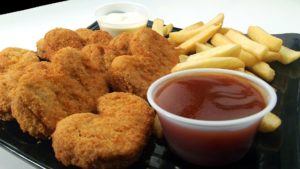 in foods like meat (and definitely meat w/ skin), butter, higher fat dairy products, and tropical oils (such as coconut or palm oil.) Cholesterol is a type of fat that is found in animal products. You can find cholesterol in meats, butter, higher fat dairy products, & eggs.
in foods like meat (and definitely meat w/ skin), butter, higher fat dairy products, and tropical oils (such as coconut or palm oil.) Cholesterol is a type of fat that is found in animal products. You can find cholesterol in meats, butter, higher fat dairy products, & eggs. This is where the rest of our fats come in… mono and polyunsaturated fats. These are the types of fats that are liquid at room temperature. You can find them in foods like nuts, seeds, fatty fish like salmon & trout, oils such as olive or canola, and avocado.
This is where the rest of our fats come in… mono and polyunsaturated fats. These are the types of fats that are liquid at room temperature. You can find them in foods like nuts, seeds, fatty fish like salmon & trout, oils such as olive or canola, and avocado.

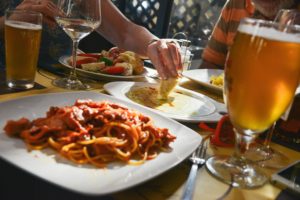 to modify things a little to give an idea what you’re looking for. You may have recalled that I’ve mentioned sometimes carbohydrates get a bad rap? Gluten doesn’t help their reputation! The foods that stand out and are absolutely a must-avoid on a gluten free diet include: wheat, rye, and barely. GRAINS! Some of the foods you need to avoid are:
to modify things a little to give an idea what you’re looking for. You may have recalled that I’ve mentioned sometimes carbohydrates get a bad rap? Gluten doesn’t help their reputation! The foods that stand out and are absolutely a must-avoid on a gluten free diet include: wheat, rye, and barely. GRAINS! Some of the foods you need to avoid are: For years now, there have been movies and media coverage that even people without Celiac Disease or gluten sensitivities should avoid foods that contain gluten. Some of the reasons that initially came out against gluten included information that gluten caused inflammation reactions, “leaky gut” syndrome, bloating and weight gain. There were also arguments made that humans hadn’t evolved to properly digest wheat because it is not a grain of our ancestors.
For years now, there have been movies and media coverage that even people without Celiac Disease or gluten sensitivities should avoid foods that contain gluten. Some of the reasons that initially came out against gluten included information that gluten caused inflammation reactions, “leaky gut” syndrome, bloating and weight gain. There were also arguments made that humans hadn’t evolved to properly digest wheat because it is not a grain of our ancestors. It’s the job of health professionals, scientists, and research teams, to produce the best information possible with their knowledge & expertise. What we as consumers tend to do with that information is where craziness can set in! When studies are published, we absolutely should check them out. We should also read them, carefully and objectively. Let’s add the information to what we already know and keep on learning more!
It’s the job of health professionals, scientists, and research teams, to produce the best information possible with their knowledge & expertise. What we as consumers tend to do with that information is where craziness can set in! When studies are published, we absolutely should check them out. We should also read them, carefully and objectively. Let’s add the information to what we already know and keep on learning more!
 Amazingly enough, as the name suggests; YES, it is for the mind. MIND diet stands for Mediterranean-DASH Intervention for Neurodegenerative Delay. In less of a mouthful: it’s meant to help reduce the risk of developing or in slowing the progression of Alzheimer’s Disease. Alzheimer’s Disease is the leading cause of dementia. If you’re not familiar with dementia, it’s the process of losing your ability to think, remember, and reason. In 2015, the statistics for dementia were pretty scary! 47 million people around the world had dementia, the cost was around $818 BILLION, and the number of people affected was projected to triple by 2050!
Amazingly enough, as the name suggests; YES, it is for the mind. MIND diet stands for Mediterranean-DASH Intervention for Neurodegenerative Delay. In less of a mouthful: it’s meant to help reduce the risk of developing or in slowing the progression of Alzheimer’s Disease. Alzheimer’s Disease is the leading cause of dementia. If you’re not familiar with dementia, it’s the process of losing your ability to think, remember, and reason. In 2015, the statistics for dementia were pretty scary! 47 million people around the world had dementia, the cost was around $818 BILLION, and the number of people affected was projected to triple by 2050!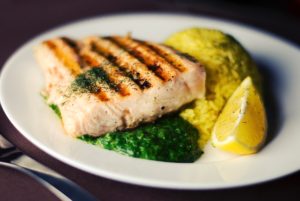 and heart disease. This diet tend to be high in healthy fats, lots of fish, & whole grains. 2. The DASH diet, which has been shown to reduce the risk of heart attacks, high blood pressure & stroke. This diet is high in fruits & veggies & low fat dairy products.
and heart disease. This diet tend to be high in healthy fats, lots of fish, & whole grains. 2. The DASH diet, which has been shown to reduce the risk of heart attacks, high blood pressure & stroke. This diet is high in fruits & veggies & low fat dairy products.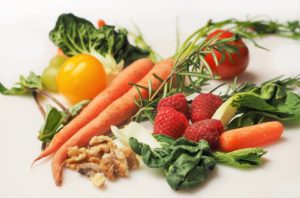

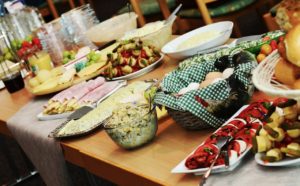 Food tends to be the glue that holds events together, so I think we associate people eating with having a good time. And that’s not wrong! I love food! We all love food! But when we’re working toward making healthier food choices, sometimes the people around us aren’t as supportive as we need them to be. I think that’s worth talking about because it can make a big impact on our motivation and success.
Food tends to be the glue that holds events together, so I think we associate people eating with having a good time. And that’s not wrong! I love food! We all love food! But when we’re working toward making healthier food choices, sometimes the people around us aren’t as supportive as we need them to be. I think that’s worth talking about because it can make a big impact on our motivation and success. dinner, go bowling or go for a walk. Going to a movie? Go after dinner & skip the popcorn. For my birthday I didn’t want the traditional cake & ice cream. We had angel food cake & fresh strawberries instead! (No regrets! It was DELICIOUS!)
dinner, go bowling or go for a walk. Going to a movie? Go after dinner & skip the popcorn. For my birthday I didn’t want the traditional cake & ice cream. We had angel food cake & fresh strawberries instead! (No regrets! It was DELICIOUS!) So there you have it! Support, planning, defining moderation, time, and specific goals…. Those are going to be your key players for being successful. Change is hard, no matter what form it takes. But you got this! If you find other strategies that have worked well for you, please feel free to share and we can add on to the list!
So there you have it! Support, planning, defining moderation, time, and specific goals…. Those are going to be your key players for being successful. Change is hard, no matter what form it takes. But you got this! If you find other strategies that have worked well for you, please feel free to share and we can add on to the list!
 words, “balanced meal,” what does that make you think?
words, “balanced meal,” what does that make you think?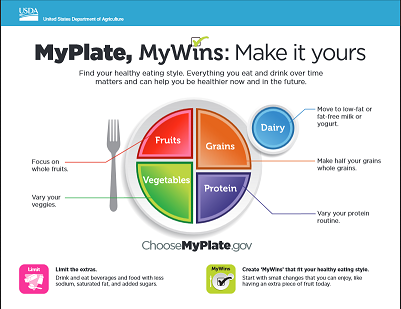
 Sometimes we have different types of foods that have similar names & it makes people turn into a zombie & swear off all nutrition information forever because it’s so confusing! It’s important to know the differences though, because it helps you plan a more balanced meal. I like to think that saying the words “beans & peas” would be like using just the last name to refer to every member of the same family. Our family members are: green beans, italian beans, wax beans, kidney beans, black beans, lima beans, garbanzo beans (also called chick peas), lentils (sorry lentils… you don’t get 2 names…. but you’re still part of the family!), navy beans, soy beans, mung beans, edamame (another name soloist!), split peas, and green peas.
Sometimes we have different types of foods that have similar names & it makes people turn into a zombie & swear off all nutrition information forever because it’s so confusing! It’s important to know the differences though, because it helps you plan a more balanced meal. I like to think that saying the words “beans & peas” would be like using just the last name to refer to every member of the same family. Our family members are: green beans, italian beans, wax beans, kidney beans, black beans, lima beans, garbanzo beans (also called chick peas), lentils (sorry lentils… you don’t get 2 names…. but you’re still part of the family!), navy beans, soy beans, mung beans, edamame (another name soloist!), split peas, and green peas.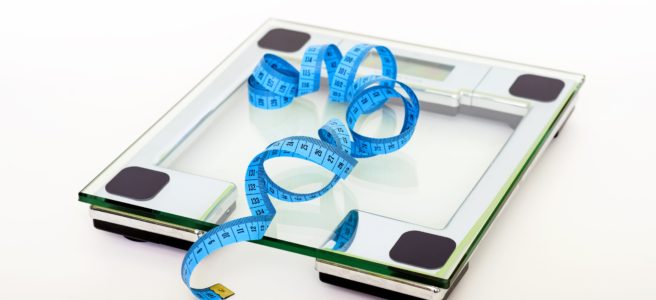


 I find that iced coffee and flavored creamers are everywhere! This nutrition label tells us there are 35 calories in one serving of flavored creamer. Not too bad, right? What else does it tell you though? One serving = 1 tablespoon! It’s pretty unlikely that anyone is using just 1 tbsp. So add that up…. do you use 3? 4? more? Do you have multiple cups of coffee everyday? I often hear people tell me they don’t understand why they can’t lose weight when they mostly just drink coffee all day. When I hear that… it really sounds like they’re eating nothing! But if you do the math… it’s a lot easier to drink your calories away and not realize it because you never feel full at the end.
I find that iced coffee and flavored creamers are everywhere! This nutrition label tells us there are 35 calories in one serving of flavored creamer. Not too bad, right? What else does it tell you though? One serving = 1 tablespoon! It’s pretty unlikely that anyone is using just 1 tbsp. So add that up…. do you use 3? 4? more? Do you have multiple cups of coffee everyday? I often hear people tell me they don’t understand why they can’t lose weight when they mostly just drink coffee all day. When I hear that… it really sounds like they’re eating nothing! But if you do the math… it’s a lot easier to drink your calories away and not realize it because you never feel full at the end. Are there other strategies? SURE! But I think some of them are a little more detailed & may be frustrating if you’re just starting to look at your diet plan with the intention of making changes.
Are there other strategies? SURE! But I think some of them are a little more detailed & may be frustrating if you’re just starting to look at your diet plan with the intention of making changes.